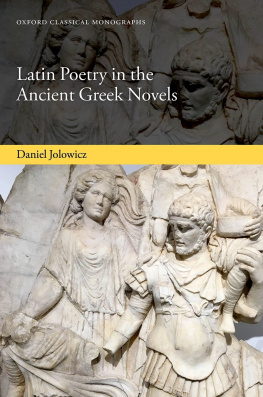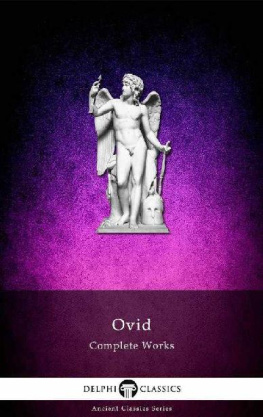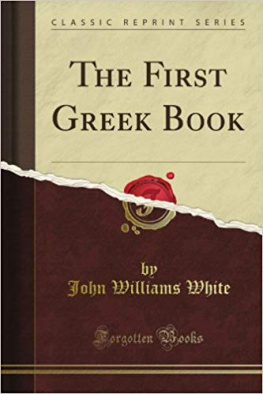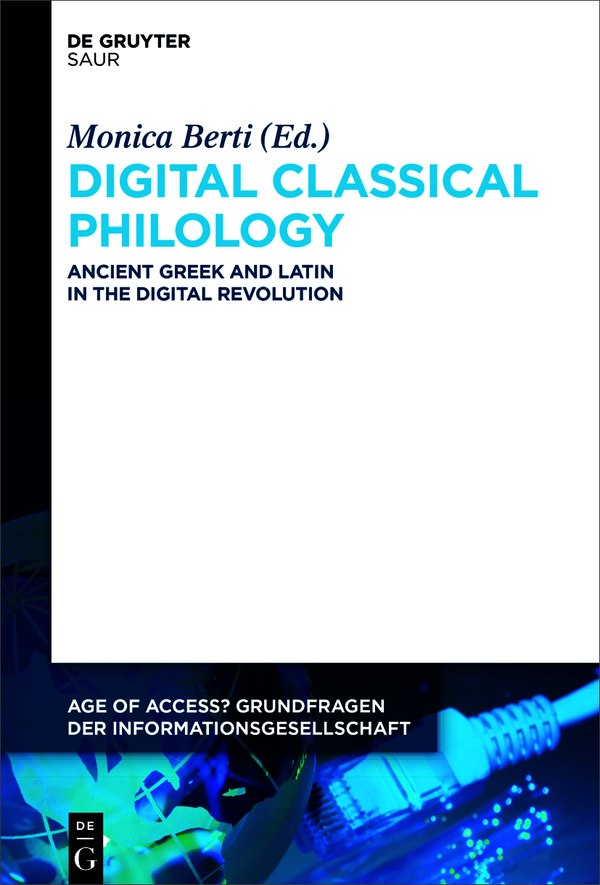Monica Berti
Digital Classical Philology
Age of Access? Grundfragen der Informationsgesellschaft
Edited by
Andr Schller-Zwierlein
Herbert Burkert
Klaus Ceynowa
Heinrich Humann
Rainer Kuhlen
Michael Jckel
Frank Marcinkowski
Rudi Schmiede
Richard Stang
Volume
Monica Berti
Digital Classical Philology
Ancient Greek and Latin in the Digital Revolution
ISBN 9783110596786
e-ISBN (PDF) 9783110599572
e-ISBN (EPUB) 9783110596991
Bibliographic information published by the Deutsche Nationalbibliothek
The Deutsche Nationalbibliothek lists this publication in the Deutsche Nationalbibliografie; detailed bibliographic data are available on the Internet at http://dnb.dnb.de.
2019 Monica Berti, published by De Gruyter
This work is licensed under the Creative Commons Attribution-NonCommercial-NoDerivatives 4.0 License.
Editors Preface
Whenever we talk about information, access is one of the terms most frequently used. The concept has many facets and suffers from a lack of definition. Its many dimensions are being analysed in different disciplines, from different viewpoints and in different traditions of research; yet they are rarely perceived as parts of a whole, as relevant aspects of one phenomenon. The book series Age of Access? Fundamental Questions of the Information Society takes up the challenge and attempts to bring the relevant discourses, scholarly as well as practical, together in order to come to a more precise idea of the central role that the accessibility of information plays for human societies.
The ubiquitous talk of the information society and the age of access hints at this central role, but tends to implicitly suggest either that information is accessible everywhere and for everyone, or that it should be. Both suggestions need to be more closely analysed. The first volume of the series addresses the topic of information justice and thus the question of whether information should be accessible everywhere and for everyone. Further volumes analyse in detail the physical, economic, intellectual, linguistic, psychological, political, demographic and technical dimensions of the accessibility and inaccessibility of information enabling readers to test the hypothesis that information is accessible everywhere and for everyone.
The series places special emphasis on the fact that access to information has a diachronic as well as a synchronic dimension and that thus cultural heritage research and practices are highly relevant to the question of access to information. Its volumes analyse the potential and the consequences of new access technologies and practices, and investigate areas in which accessibility is merely simulated or where the inaccessibility of information has gone unnoticed. The series also tries to identify the limits of the quest for access. The resulting variety of topics and discourses is united in one common proposition: It is only when all dimensions of the accessibility of information have been analysed that we can rightfully speak of an information society.
Andr Schller-Zwierlein
Preface
More than fifty years have passed since 1968, when Harvard University Press published the Concordance to Livy (A Concordance to Livy [Harvard 1968]), the first product of what we might now call Digital Classics. In the basement of the Harvard Science Center, David Packard had supervised the laborious transcription of the whole of Livys History of Rome onto punch cards and written a computer program to generate a concordance with 500,000 entries, each with 20 words of context. Fourteen years later, when in 1982 I began work on the Harvard Classics Computing Project, technology had advanced. The available of Greek texts from the Thesaurus Linguae Graecae on magnetic tape was the impetus for my work the department wanted to be able to search the authors in this early version of the TLG on a Unix system. There was also a need to computerize typesetting in order to contain the costs of print publication. Digital work at that time was very technical and aimed at enhancing traditional forms of concordance research and print publication.
When I first visited Xeroxs Palo Alto Research Center in 1985, I also saw for first time a digital image indeed, one that was projected onto a larger screen. As I came to understand what functions digital media would support, I began to realize that digital media would do far more than enhance traditional tasks. As a graduate student, I had shuttled back and forth between Widener, the main Harvard library, and the Fogg Art Museum library, a five or ten minute walk away. That much distance imposed a great deal of friction on scholarship that sought to integrate publications about both the material and the textual record. It was clear that we would be able to have publications that combined every medium and that could be delivered digitally. My own work on Perseus began that year with a Xerox grant of Lisp Machines (already passing into obsolescence and surely granted as a tax write-off).
A generation later, the papers in this publication show how far Digital Classics has come. When I began my own work on Perseus in the 1980s, much of Greek and Latin literature had been converted into machine readable texts but the texts were available only under restrictive licenses. The opening section of the collection, Open Data of Greek and Latin Sources, describes the foundational work on creating openly licensed corpora of Greek and Latin that can support scholarship without restriction. Scholars must have data that they can freely analyze, modify and redistribute. Without such freedom, digital scholarship cannot even approach its potential. Muellner and Huskey talk about collaborative efforts to expand the amount of Greek source text available and to begin developing born-digital editions of Latin sources. Cayless then addresses the challenge of applying the methods of Linked Open Data to topics such as Greco-Roman culture.
Cataloging and Citing Greek and Latin Authors and Works illustrates not only how Classicists have built upon larger standards and data models such as the Functional Requirements for Bibliographic Records (FRBR, allowing us to represent different versions of a text) and the Text Encoding Initiative (TEI) Guidelines for XML encoding of source texts (representing the logical structure of sources) but also highlights some major contributions from Classics. Alison Babeu, Digital Librarian at Perseus, describes a new form of catalog for Greek and Latin works that exploits the FRBR data model to represent the many versions of our sources including translations. Christopher Blackwell and Neel Smith built on FRBR to develop the Canonical Text Services (CTS) data model as part of the CITE Architecture. CTS provides an explicit framework within which we can address any substring in any version of a text, allowing us to create annotations that can be maintained for years and even for generations. This addresses at least within the limited space of textual data a problem that has plagued hypertext systems since the 1970s and that still afflicts the World Wide Web. Those who read these papers years from now will surely find that many of the URLs in the citations no longer function but all of the CTS citations should be usable whether we remain with this data model or replace it with something more expressive. Computer Scientists Jochen Tiepmar and Gerhard Heyer show how they were able to develop a CTS server that could scale to more than a billion words, thus establishing the practical nature of the CTS protocol.











